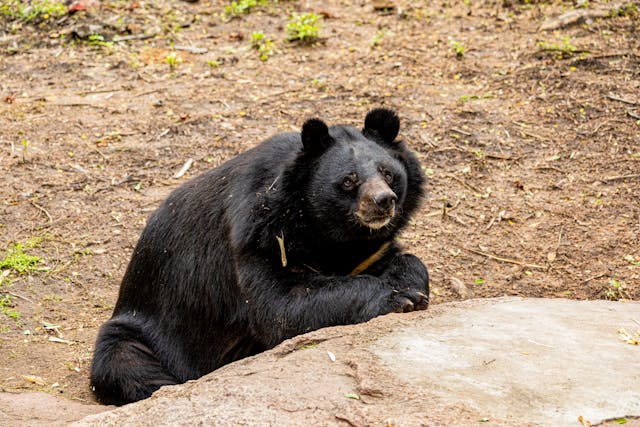Fond du Lac County black bear sightings raise curiosity, caution, and big questions about wildlife, safety, and human coexistence.
When people in Fond du Lac County step outside in the morning, they expect to see dairy cows, deer, maybe a sandhill crane or two. What they don’t expect is a black bear lumbering across their lawn. Yet, over the past few years, sightings of black bears in this part of Wisconsin have been creeping upward. This isn’t Yellowstone. It’s farm country. And that contrast is what makes the story of Fond du Lac County’s black bear encounters so compelling, especially for local businesses learning about adapting business strategies to environmental changes that affect their operations.
Article Breakdown
Black Bears in Wisconsin: Not Just a Northern Story
Traditionally, black bears are a “northwoods” species in Wisconsin. They thrive in the thick forests of the northern half of the state where human population density thins out and wild foods are plentiful. But bears are mobile. They’re young, curious, and sometimes stubborn travelers. Fond du Lac County, sitting in the east-central part of the state, was never a black bear stronghold. Yet, here we are, with reports of bears nosing around bird feeders, cornfields, and even suburban trash bins.
This raises a big question: Are these isolated wanderers, or is something deeper happening with Wisconsin’s wildlife distribution?
Why Bears Wander So Far
The first thing to know is that black bears, especially young males, are great roamers. They can cover 50–100 miles in search of food, mates, or new territory. Fond du Lac County, with its mix of farmland, wetlands, and woodlots, might not look like bear country at first glance. But if you zoom out, it’s basically a patchwork buffet.
Think about it:
- Corn and soybeans provide easy calories.
- Orchards and berry bushes offer natural snacks.
- Wetlands and wooded corridors give them cover to move without being too exposed.
So, while it may seem bizarre to see a bear crossing Highway 41, the landscape itself almost invites exploration.
Local Sightings and the Human Response
When a Fond du Lac resident reports a bear on their security camera or wandering near a schoolyard, the news spreads quickly. Some folks react with fascination, snapping photos, telling their neighbors. Others feel a flash of anxiety, especially if kids or pets are involved.
Local authorities, like the Wisconsin Department of Natural Resources (DNR), tend to strike a calm but cautious tone. Their advice usually sounds something like: don’t feed it, don’t chase it, and definitely don’t corner it. The goal isn’t to remove bears from the county entirely, but to manage the encounters so that people stay safe and the bear eventually moves along.
Bears and Farmers: A Delicate Balance
One overlooked part of the story is the tension between bears and agriculture. Farmers in Fond du Lac County already deal with deer eating soybeans and raccoons raiding sweet corn. A 200-pound black bear can do far more damage in a single night than a family of raccoons. Imagine a bear flattening rows of corn stalks just to reach the kernels, or breaking into a bee yard and tearing up hives for honey.
For farmers, a bear isn’t a novelty, it’s a potential cost. This is where state compensation programs sometimes come in, offering farmers financial relief when wildlife damages crops or livestock. But that doesn’t fully erase the frustration of seeing hard work chewed up overnight.
The Symbolism of a Bear in Fond du Lac
Let’s step back for a second. A black bear showing up in Fond du Lac County isn’t just a biological event. It’s also a cultural one.
Bears carry weight in human imagination. They’re powerful, intelligent, unpredictable. When one shows up in a place that feels too “civilized” for such an animal, it rattles assumptions. It makes people wonder if the wild is closer than they thought.
This duality, fear and awe, gives the Fond du Lac bear story a depth that goes beyond paw prints in a cornfield.
Is Climate Change Nudging the Bears?
Now for the uncomfortable question: Is climate change part of this shift?
Wisconsin’s winters are warming, forests are changing, and human development continues to reshape landscapes. In this blend of pressures, wildlife adapts. Bears may find new corridors opening up, or food sources appearing in unexpected places. Fond du Lac County might not be the “end destination,” but it could be a stepping stone in broader migration patterns we don’t fully grasp yet.
Some biologists argue that what we’re seeing isn’t climate-driven but simply population growth. Wisconsin’s black bear numbers have been climbing steadily over the past decades. More bears means more dispersal. Both explanations may be true at once, which is what makes wildlife stories so layered.
The Human Side: Curiosity, Caution, and Storytelling
Every sighting of a Fond du Lac black bear becomes a story. A dad tells his kids about the time he saw a bear in the ditch. A farmer tells his neighbor about paw prints near the corn crib. A local Facebook group lights up with blurry night-vision footage.
This storytelling does something important: it builds a shared awareness that wildlife isn’t just “out there” in national parks. It’s here. It’s next to our driveways, wandering across our trails, maybe even knocking over the garbage can on recycling day.
The bear becomes both a literal animal and a symbol of wild persistence in a human-dominated world.
Safety First: Living with a Black Bear in the Neighborhood
For anyone in Fond du Lac County who does cross paths with a black bear, here’s the essential playbook:
- Secure your food sources. Trash cans, bird feeders, and outdoor pet food are bear magnets.
- Don’t run. Running can trigger a chase instinct, even if the bear wasn’t interested.
- Make noise. Clapping, shouting, or banging a pot signals that you’re not prey.
- Keep distance. A curious bear is one thing, but a cornered bear can be dangerous.
These aren’t just theoretical tips, they’re practical survival habits for coexisting with an animal that’s both impressive and potentially risky.
Key Takings
- Black bears showing up in Fond du Lac County may seem odd, but it’s a growing pattern tied to natural dispersal and habitat variety.
- The county’s farmland, orchards, and wetlands create a surprising food-rich corridor for wandering bears.
- Human reactions range from fascination to fear, but the common thread is respect for the animal’s unpredictability.
- Farmers face unique challenges, as bears can damage crops and bee yards in ways that feel both frustrating and costly.
- Whether climate change or population growth is the driver, the broader picture is that wildlife distribution is shifting.
- Safety measures, like securing food sources and giving bears space, are crucial for peaceful coexistence.
- Beyond biology, a bear sighting becomes a cultural marker, reminding residents that the wild isn’t as far away as it sometimes feels.
Additional Resources:
- Wisconsin Black Bear Management Overview A detailed look at bear populations, hunting regulations, and conservation strategies across the state.
- Living with Black Bears: Safety and Coexistence Guide Practical steps for homeowners and communities facing increased bear encounters.



